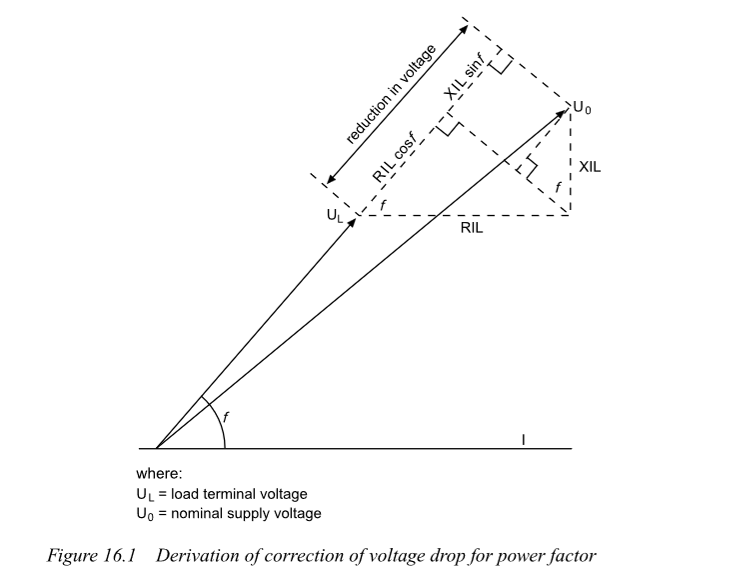Could someone please explain how the value of sin is calculated when working out voltage drop for cables above 16mm? Do we use the values provided in BS 7671 appendix 4 such as resistance reactance and impedance of a conductor?
Thank you
Derivation from here, according to the much revered Paul Cooke (my favourite technical author).

I have drawn this out to scale with a real example and in fact the margin for error is very much less than what would seem to be the case from his diagrammatic explanation.
By the way, for inserting in the voltage drop formula for conductors more than 16mm2,sin theta found from;

I have to thank GK and MapJ for their fantastic assistance on this one!
 (1)
(1)
Is Pythagoras - In a right angle triangle, the hypotenuse (side opposite the right angle) has a length that is the square root of the sum of squares of the other two sides. Neat proof here far better than I can draw it ;-)
Let us name the sides of that triangle a, b, h
Now as the sine of an angle is the length of the side opposite it over the hypotenuse, (a/h) and the cosine is the side adjacent to it over the hypotenuse (b/h), then eliminating the hypotenuse by cancellation we see that if
(a/h)^2+ (b/h)^2 =1 or (2)
(sin(x))^2 + Cos(x))^2=1 which is eqn 1 above.
 (1)
(1)
Is Pythagoras - In a right angle triangle, the hypotenuse (side opposite the right angle) has a length that is the square root of the sum of squares of the other two sides. Neat proof here far better than I can draw it ;-)
Let us name the sides of that triangle a, b, h
Now as the sine of an angle is the length of the side opposite it over the hypotenuse, (a/h) and the cosine is the side adjacent to it over the hypotenuse (b/h), then eliminating the hypotenuse by cancellation we see that if
(a/h)^2+ (b/h)^2 =1 or (2)
(sin(x))^2 + Cos(x))^2=1 which is eqn 1 above.
We're about to take you to the IET registration website. Don't worry though, you'll be sent straight back to the community after completing the registration.
Continue to the IET registration site